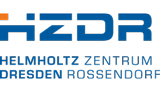Department of Chemistry of the f-elements
|
We study the chemistry of the actinides and their lanthanide homologues in solid state as well as in solution. Modern analytical tools combined with quantum chemical computations, provide atomic scale information which can be used to characterize the physico-chemical properties of the actinides in molecules. |
Our main focus is on the coordination chemistry of f-elements with inorganic and organic ligands, mostly biological and bio-inspired ligand systems. These studies use single-crystal X-ray diffraction to study structures in the solid state, and spectroscopic techniques, such as NMR, XANES, and TRLFS, to characterize structures in solution. All studies are complemented by quantum-theoretical calculations, which rely heavily on the in-house development of theoretical methods for 5f systems (i.e. actinides).
The fundamental understanding of actinide chemistry is applied to investigate actinide reactivity at the water/mineral interface, where atomic force microscopy, TRLFS, and surface X-ray diffraction are used as surface sensitive speciation techniques.
A full list of experimental equipment and capacities can be found here.
Our group is open for interested Bachelor's and Master's students, as well as research internships. Get in touch with us!
Latest Publication
Preparation and characterization of Mn(II)Mn(III) complexes with relevance to class Ib ribonucleotide reductases
Doyle, L. M.; Bienenmann, R. L. M.; Gericke, R.; Xu, S.; Farquhar, E. R.; Que Jr, L.; McDonald, A. R.
Abstract
The Mn₂ complex (Mn(II)₂(TPDP)(O₂CPh)₂)(BPh₄) (1, TPDP = 1,3-bis(bis(pyridin-2-ylmethyl)amino)propan-2-ol, Ph = phenyl) was prepared and subsequently characterized via single-crystal X-ray diffraction, X-ray absorption, electronic absorption, and infrared spectroscopies, and mass spectrometry. 1 was prepared in order to explore its properties as a structural and functional mimic of class Ib ribonucleotide reductases (RNRs). 1 reacted with superoxide anion (O₂(•–)) to generate a peroxido-MnIIMnIII complex, 2. The electronic absorption and electron paramagnetic resonance (EPR) spectra of 2 were similar to previously published peroxido-Mn(II)Mn(III) species. Furthermore, X-ray near edge absorption structure (XANES) studies indicated the conversion of a Mn(II) 2 core in 1 to a Mn(II)Mn(III) state in 2. Treatment of 2 with para-toluenesulfonic acid (p-TsOH) resulted in the conversion to a new Mn(II)Mn(III) species, 3, rather than causing O—O bond scission, as previously encountered. 3 was characterized using electronic absorption, EPR, and X-ray absorption spectroscopies. Unlike other reported peroxido-Mn(II)Mn(III) species, 3 was capable of oxidative O—H activation, mirroring the generation of tyrosyl radical in class Ib RNRs, however without accessing the Mn(III)Mn(IV) state.
Keywords: Bioinorganic; Dimanganese cluster; Ribonucleotide reductase; Dioxygen activation; electron paramagnetic resonance
-
 Journal of Inorganic Biochemistry 257(2024), 112583
Journal of Inorganic Biochemistry 257(2024), 112583
DOI: 10.1016/j.jinorgbio.2024.112583
Permalink: https://www.hzdr.de/publications/Publ-39110
Projects
Current
- Bioinspired polyhydroxamic sequestering agents for the in vivo decorporation of actinides
(ActiDecorp, ANR/DFG, 04/2024-03/2027) - Actinide-metal-bonding at the atomic level
(Am-BALL, BMUV, 05/2023-04/2026) - Investigation of the interactions of f-elements with biologically-relevant structural motives: Determination of structure-effect principles for a mobilization in the environment
(FENABIUM-II, BMBF, 04/2023-03/2026) - Competition and Reversibility of sorption processes
(KuRSiV, BMUV, 01/2023-06/2026) - Spectroscopic characterization of f-Element complexes with soft donor ligands
(f-Char, BMBF, 10/2020 - 03/2024)
Expired
- Structure effect relations between f-elements and organic ligands with natural-analogue binding modes in regards to a possible mobilization in the environment
(FENABIUM, BMBF, 10/2016 – 05/2021) - Smart-Kd applications for the long term safety assessment of nuclear waste disposal sites
(SMILE, BMWi, 09/2018 – 02/2022)
Team
Head | |||||
| Name | Bld./Office | +49 351 260 | |||
|---|---|---|---|---|---|
| PD Dr. habil. Moritz Schmidt | 801/P249 | 3156 2536 | moritz.schmidt | ||
Employees | |||||
| Name | Bld./Office | +49 351 260 | |||
| Johannes Balas | j.balas | ||||
| Dr. Robert Gericke | 801/P205 | 2011 | r.gericke | ||
| Dennis Grödler | 801/P205 | 2438 | d.groedler | ||
| Dr. Peter Kaden | 801/P217 | 2261 | p.kaden | ||
| Aliaksandra Khokh | 801/P219 | 3194 | a.khokh | ||
| Jessica Lessing | 801/P352 | 3154 | j.lessing | ||
| Adrian Näder | 801/P352 | 3154 | a.naeder | ||
| Dr. Michael Patzschke | 801/P356 | 2989 | m.patzschke | ||
| Jason Daniel Ross | 801/P306 | 2860 | j.ross | ||
| Till Erik Sawallisch | 801/P350 | 2035 | t.sawallisch | ||
Actinid chemistry of metall organics | |||||
| Name | Bld./Office | +49 351 260 | |||
| Dr. Juliane März | 801/P217 | 3209 2506 | j.maerz | ||

